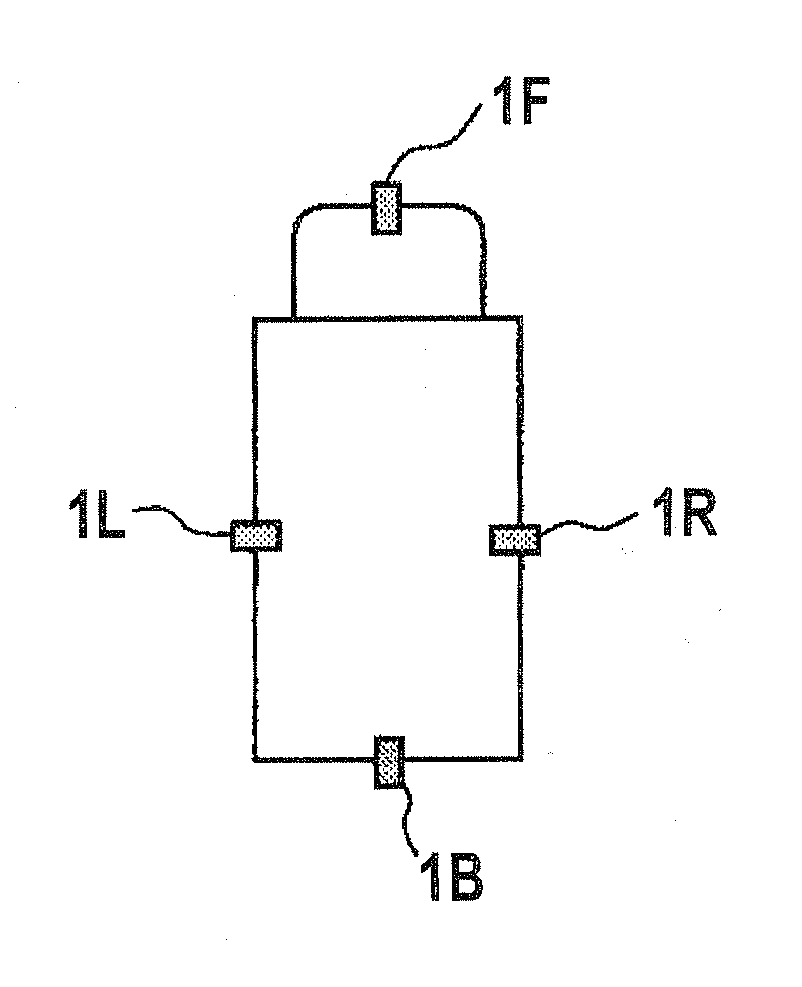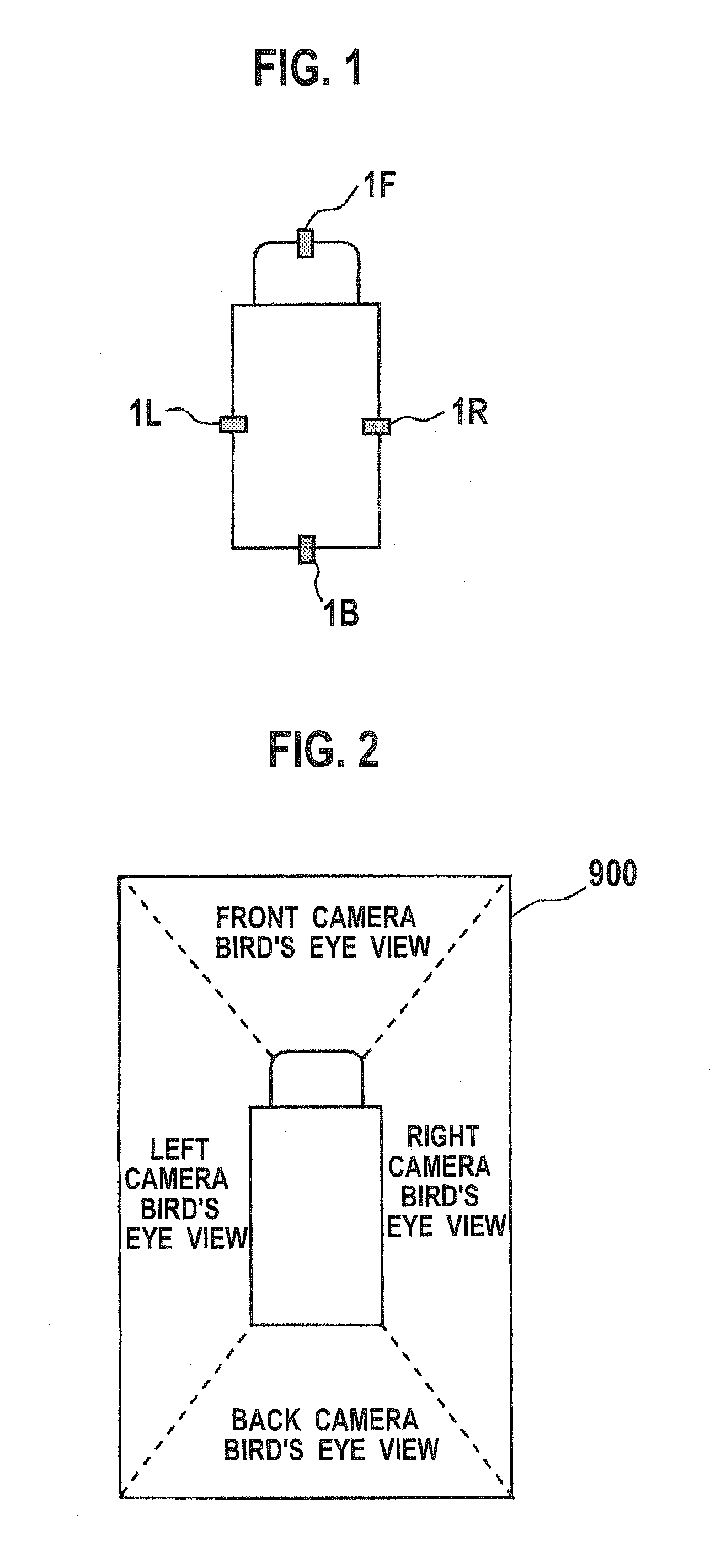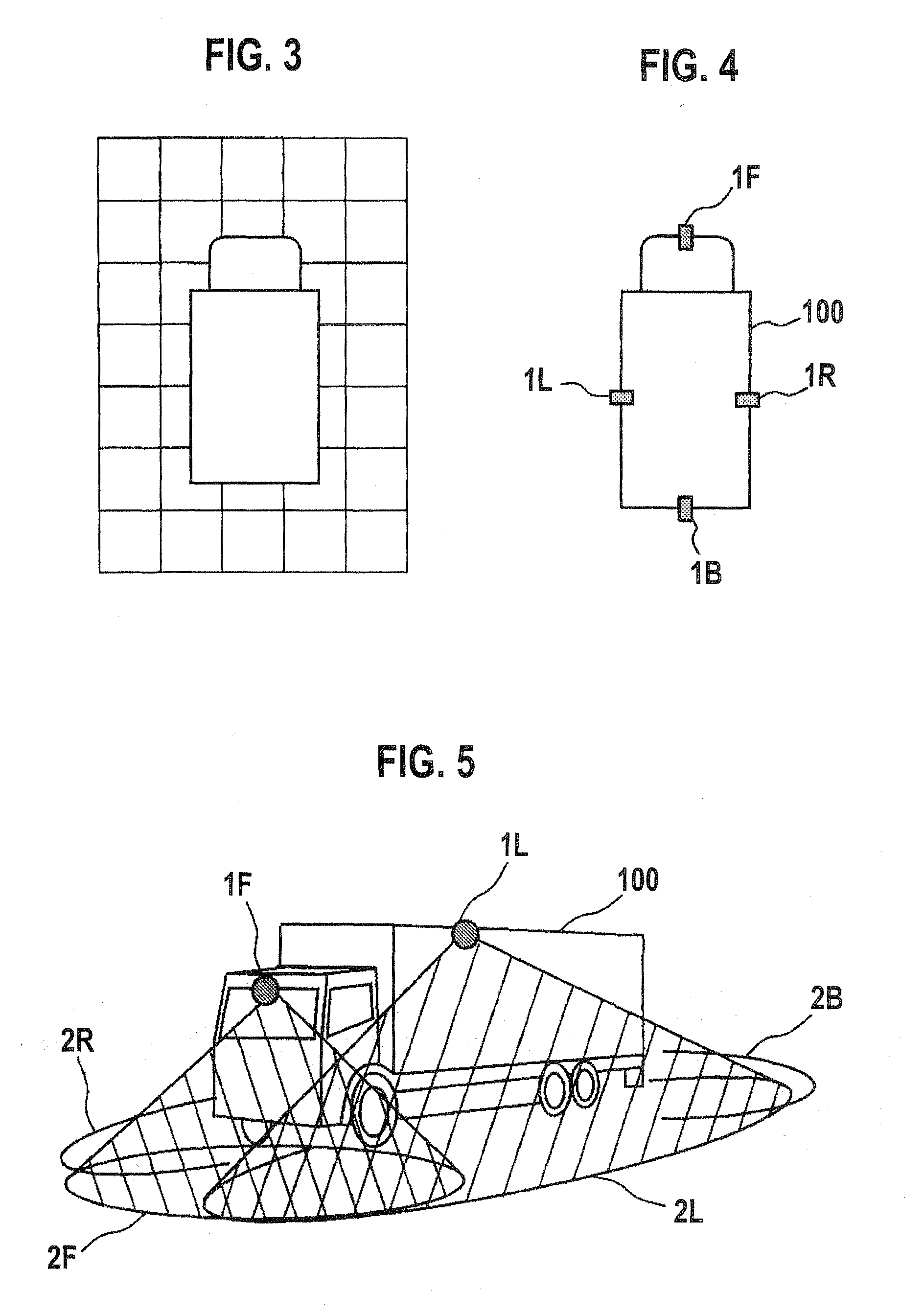Camera calibration device, camera calibration method, and vehicle having the calibration device
a calibration device and camera technology, applied in the field of image processing, can solve the problems of increasing the burden on the calibration operation as a whole, affecting the calibration environment, and reducing the accuracy of the calibration operation, so as to facilitate the maintenance of the calibration environment and reduce the effect of image degradation
- Summary
- Abstract
- Description
- Claims
- Application Information
AI Technical Summary
Benefits of technology
Problems solved by technology
Method used
Image
Examples
first embodiment
[0048]The first embodiment now will be explained. FIG. 4 is a plan view showing a vehicle 100 viewed from above in which a visibility support system of the first embodiment is applied, showing an arrangement of cameras on the vehicle 100. FIG. 5 is a perspective view of the vehicle 100 viewed obliquely from the front-left side. Although a truck is shown as the vehicle 100 in FIGS. 4 and 5, the vehicle 100 can be any other vehicle such as a regular passenger automobile. Also, the vehicle 100 is located on the ground such as a road surface. In the following explanations, the ground is assumed to be a horizontal plane and the “height” indicates a height with respect to the ground.
[0049]As shown in FIG. 4, cameras (image pickup devices) 1F, 1R, 1L, and 1B are mounted at the front part, the right side part, the left side part, and the back part of the vehicle 100 respectively. The cameras 1F, 1R, 1L, and 1B simply may be referred to as the cameras or each camera without being distinguish...
second embodiment
[0093]Moreover, by arranging the feature points as shown in FIG. 16, it is possible to perform the calibration processing as shown in FIG. 17. The embodiment of this processing will now be described as a second embodiment. The second embodiment corresponds to a variant of the first embodiment in which a part of the calibration processing method of the first embodiment is changed, and the content described in the first embodiment applies to the second embodiment as long as it is not contradictory. The calibration processing procedure that is different from the first embodiment will be explained below.
[0094]FIG. 17 is a flowchart showing a calibration processing procedure according to the second embodiment. First, at step S21, transformation parameters for the camera 1L as a reference camera is computed based on the perspective projection transformation. This computing method is the same as that of step S11 of FIG. 11.
[0095]Next, at step S22, four feature points (or more than four fea...
third embodiment
[0104]Next, the third embodiment will be explained. The third embodiment corresponds to a variant of the first embodiment in which a part of the calibration method of the first embodiment is changed, and the content described in the first embodiment applies to the third embodiment as long as it is not contradictory. The calibration processing procedure that is different from the first embodiment will be explained below.
[0105]In the third embodiment, a calibration pattern is used at the time of the calibration processing. FIG. 20 is a plan view of the periphery of the vehicle 100 showing an arrangement of each calibration pattern. As shown in FIG. 20, planar (two-dimensional) calibration patterns A1, A2, A3, and A4 are arranged within each of the common fields of view 3FR, 3FL, 3BR, and 3BL. The calibration patterns A1 to A4 are located on the ground.
[0106]Each of the calibration patterns has a square configuration having the length of each side e.g. about 1 m to 1.5 m. While it is n...
PUM
 Login to View More
Login to View More Abstract
Description
Claims
Application Information
 Login to View More
Login to View More - R&D
- Intellectual Property
- Life Sciences
- Materials
- Tech Scout
- Unparalleled Data Quality
- Higher Quality Content
- 60% Fewer Hallucinations
Browse by: Latest US Patents, China's latest patents, Technical Efficacy Thesaurus, Application Domain, Technology Topic, Popular Technical Reports.
© 2025 PatSnap. All rights reserved.Legal|Privacy policy|Modern Slavery Act Transparency Statement|Sitemap|About US| Contact US: help@patsnap.com



